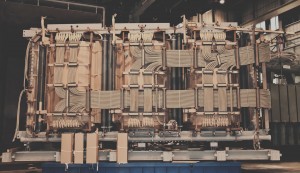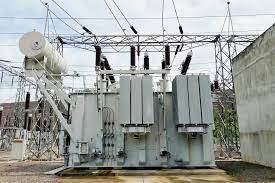During the operation of the transformer, the main factors affecting the insulation performance of the transformer are temperature, humidity, oil protection method and overvoltage effect. Therefore, controlling these factors within a reasonable range is a key element to ensure the safe use of transformers.
1. Effect of temperature Power transformers are insulated with oil paper, and the moisture in the oil paper has different equilibrium curves at different temperatures. Generally, when the temperature rises, the moisture in the paper will settle into the pool; otherwise, the paper will absorb the moisture from the oil. Therefore, the higher the temperature, the greater the water content of the insulating oil in the transformer; on the contrary, the smaller the water content. When the temperature is different, the degrees of dissolution and chain scission of cellulose accompanied by gas generation are different. At a certain temperature, the production rate of CO and CO2 is constant, that is, the gas content of CO and CO2 in oil has a linear relationship with time. The production rates of CO and CO increase exponentially with increasing temperature. It can be seen that the content of CO and CO in the oil is directly related to the thermal aging of the insulating paper, and the change of the content can be used as one of the criteria for judging whether the paper layer in the sealed transformer is abnormal. The life of a transformer depends on the aging of the insulation, which in turn depends on the operating temperature. Under rated load, the average temperature of the oil-immersed transformer winding rises to 65°C, and the highest temperature rises to 78°C. If the average ambient temperature is 20°C, the hottest point temperature is 98°C; at this temperature, the transformer can operate for 20-30 years, and if the transformer is overloaded, the temperature will rise, thereby shortening the life. According to the International Electrotechnical Commission (IEC), in the temperature range of 80-140°C for class A insulating transformers, the effective life of the transformer insulation will double for every 6°C increase in temperature. This is the 6°C rule, and it illustrates the limitations of heat. It is stricter than the 8°C rule accepted in the past.
2. The influence of humidity The presence of moisture accelerates the degradation of paper cellulose. Therefore, the production of CO and CO2 is also related to the moisture content of the cellulosic material. When the humidity is constant, the higher the water content, the more carbon dioxide will decompose. Conversely, the lower the water content, the more CO is decomposed. Trace moisture in insulating oil is one of the important factors affecting insulation performance. The existence of trace moisture in insulating oil has great harm to the electrical and physical and chemical properties of the insulating medium. Moisture will reduce the spark discharge voltage of the insulating oil, increase the dielectric loss factor tg8, promote the aging of the insulating oil, and deteriorate the insulation performance. Wet equipment will not only reduce the operational reliability and service life of power equipment, but also cause equipment damage and even endanger personal safety.
3. The effect of oil protection method The effect of oxygen in transformer oil accelerates the insulation decomposition reaction, and the oxygen content is related to the protection method of oil. In addition, different pools react differently to the way CO and CO2 dissolve and diffuse in oil. For example, the dissolved amount of CO is small, and CO can easily diffuse into the oil surface space in an open transformer. Therefore, the volume fraction of CO in an open transformer generally does not exceed 300×10-6. For sealed transformers, because the oil surface is insulated from the air, CO and CO2 are not easy to volatilize, so the content is relatively high.
4. The influence of overvoltage
(1) The influence of transient overvoltage The phase-to-ground voltage generated by the normal operation of the three-phase transformer is 58% of the phase voltage, but when a single-phase fault occurs, the main insulation voltage of the neutral point grounding system increases by 30%, and the neutral point grounding The main insulation voltage of the system is increased by 73%. If the neutral point is not grounded in the system, the insulation may be damaged.
(2) The influence of lightning overvoltage Due to the steep lightning overvoltage wave, the voltage distribution on the longitudinal insulation (inter-turn, parallel, insulation) is very uneven, which may leave discharge traces on the insulation, thereby destroying the solid insulation.
(3) Influence of working overvoltage Since the working overvoltage head is relatively smooth, the voltage distribution is approximately linear. When the working overvoltage wave is transferred from one winding to another, it is roughly proportional to the number of turns between the two windings, which is likely to cause deterioration and damage to the main insulation or interphase insulation.
5. Influence of short-circuit electromotive force. The electromotive force when the outgoing line is short-circuited will deform the transformer winding and shift the lead-out line, thereby changing the original insulation distance, causing insulation to heat up, accelerating aging or damage, and causing discharge, arcing, and short-circuit faults.
Post time: May-08-2023


